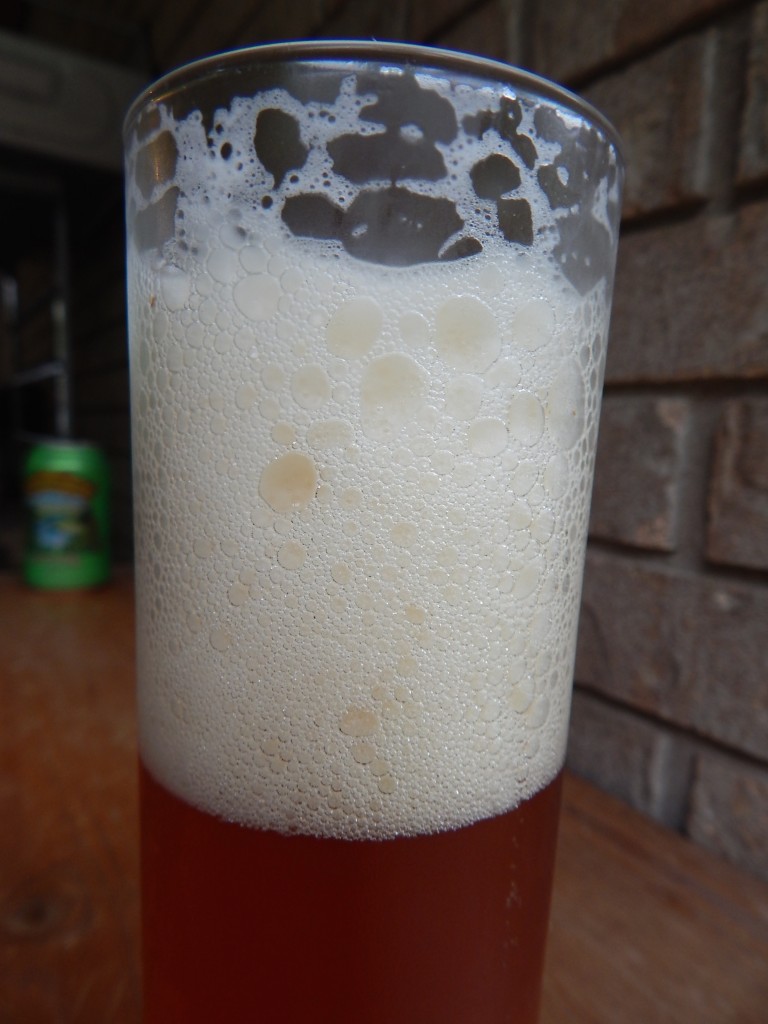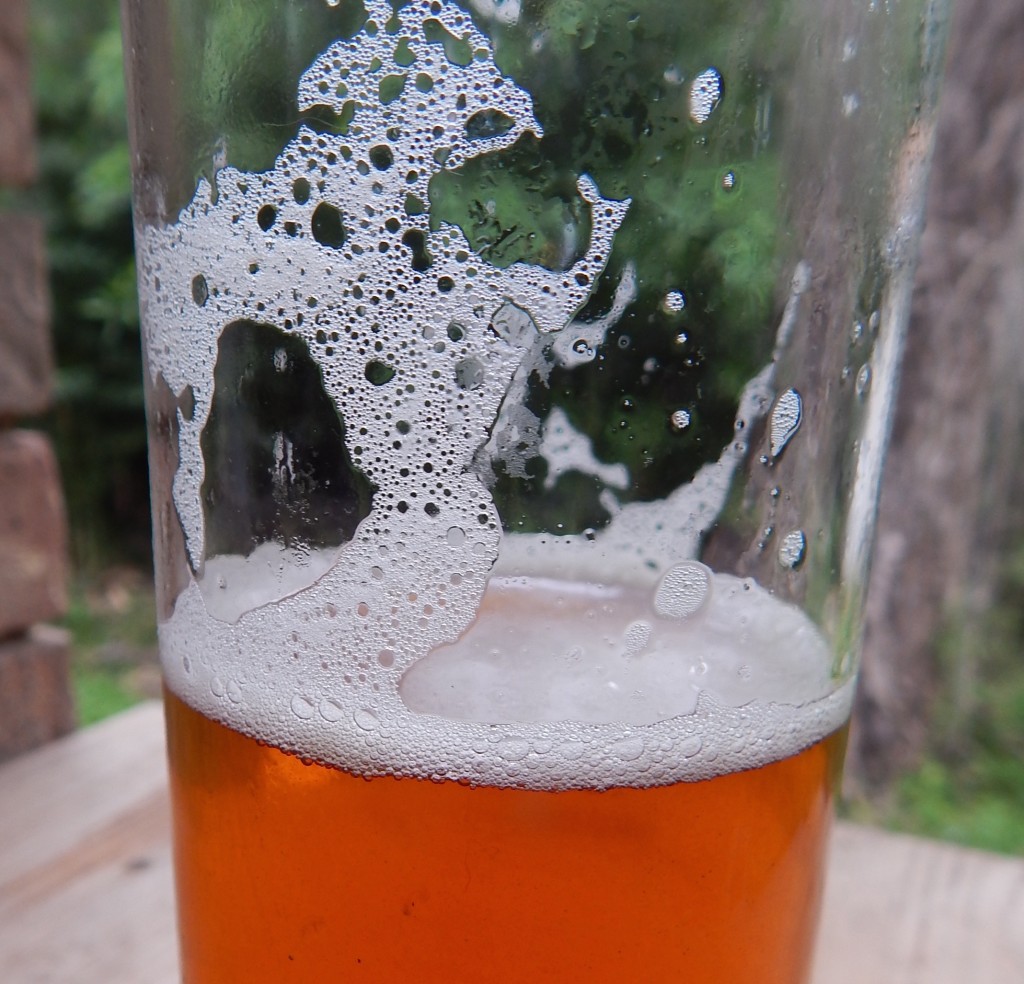 Foam forms in a carbonated beverage when bubbles rising through the liquid begin stacking up on the surface. After awhile, however, the foam will begin to recede. There are three main processes involved in foam collapse.
Foam forms in a carbonated beverage when bubbles rising through the liquid begin stacking up on the surface. After awhile, however, the foam will begin to recede. There are three main processes involved in foam collapse.
Drainage
Newly formed foam is comparatively wet. As it stands, liquid drains through the liquid phase of the bubbles back into the beverage beneath. As this happens, the volume of the foam changes little, although it becomes significantly less dense. (This is because one unit volume of liquid weighs much more than the same unit volume of gas.) Eventually, the foam on top dries out (comparatively) and what’s left is foam with a density closer to the gas than the liquid. This process is called drainage.
Wet foam that rises and subsides quickly tends not to leave much lacing. Relatively stable, dry foam is needed to get nice rings of lacing down the side of the glass.
Coalescence
Bubbles pop. In foam, this causes coalescence — the merging of two bubbles into one. When the interface between two bubbles break, the remaining intact surfaces of the bubbles enclose a single open space. As mentioned earlier, larger bubbles have less internal gas pressure. So, when two bubbles combine, their combined volume actually increases slightly. (Bubbles that pop on the surface give up their gas to the atmosphere, decreasing the volume of foam.) In turn, the surface of the large bubble becomes thinner and weaker, making it more likely to pop.
Disproportiation
 Smaller bubbles are under more pressure than larger bubbles. The amount of surface area per unit volume is greater in a small bubble than a large bubble. Thus smaller bubbles have more surface area pushing on them per unit volume, than larger bubbles.
Smaller bubbles are under more pressure than larger bubbles. The amount of surface area per unit volume is greater in a small bubble than a large bubble. Thus smaller bubbles have more surface area pushing on them per unit volume, than larger bubbles.
In foams in which the gas is soluble in the liquid phase of the bubbles, gas diffuses from bubble to bubble with a net flow of gas going from smaller bubbles to larger bubbles. This is called disproportiation.
This process contains a positive feedback loop — as a small bubble gives gas to a larger bubble, it becomes smaller (and under more pressure) while the large bubble becomes larger (and under less pressure). The net rate of diffusion from small bubble to large thus increases until the large bubble pops.
Incidentally, a foam composed of same-sized bubbles is called a monodisparate foam. A foam with bubbles of different sizes is a polydisparate foam. In a typical glass of beer, the foam starts out near the monodisparate end of the spectrum. This is because the first bunch of bubbles are all formed at once when the beer is poured, and they are all at least roughly the same size. As time goes on — and the foam starts to coalesce, and the gas pressure starts to even out via disproportiation — the foam becomes more polydisparate.
In the next installment of this article, I will discuss the molecules — especially the surfactants — relevant to beer foam.
—
Related Articles


Speak Your Mind